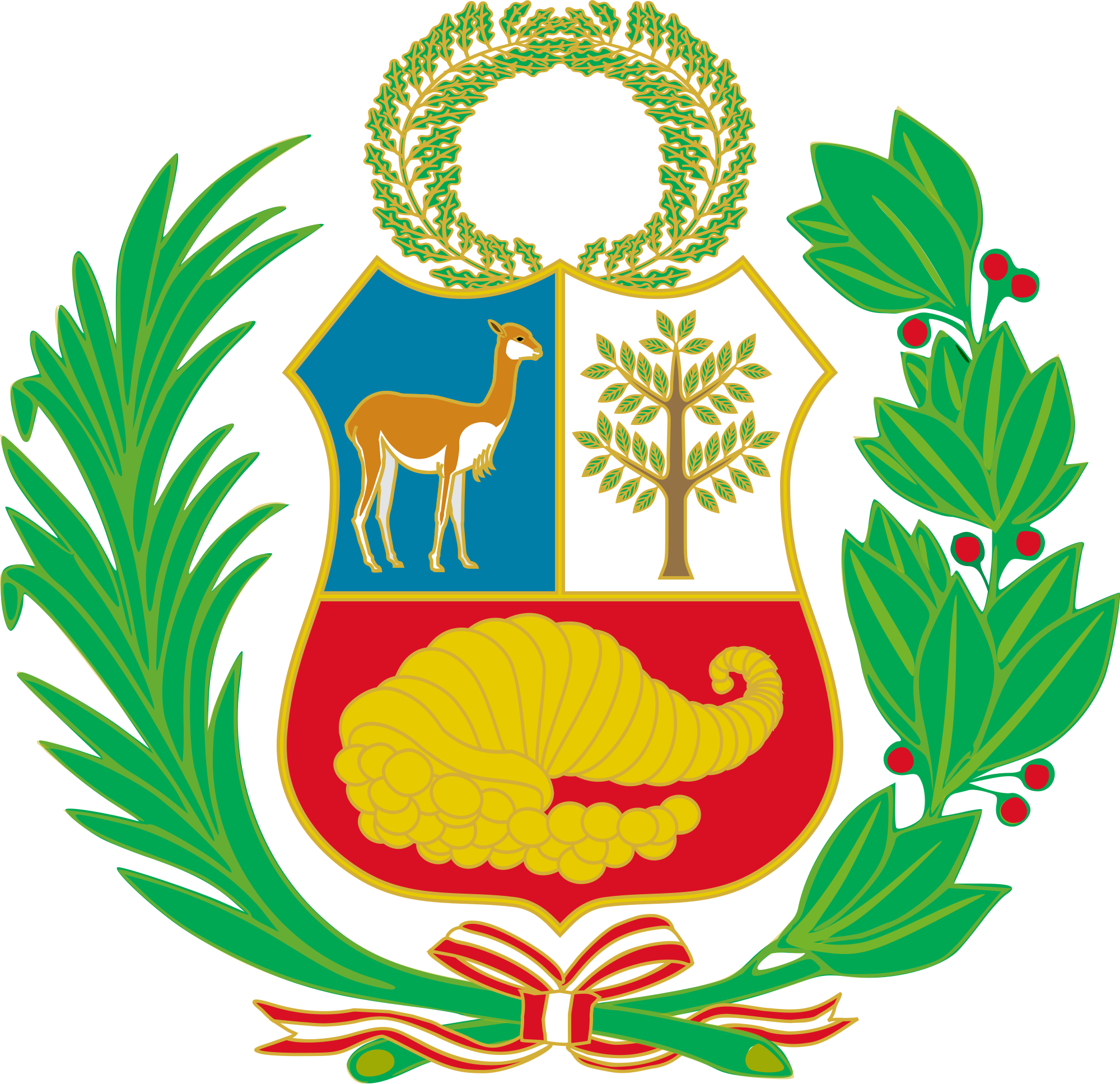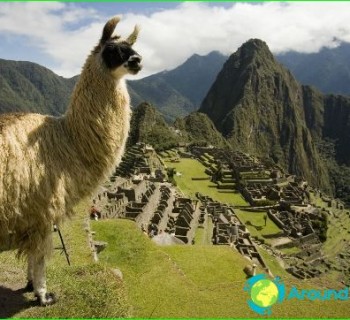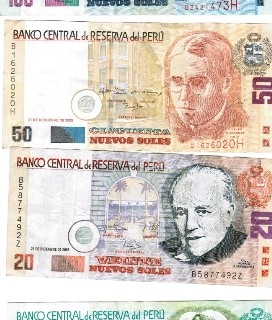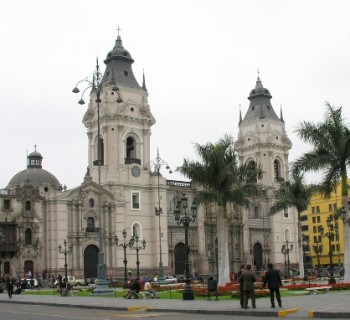Coat of arms of Peru

One of the most mysterious states on the world map, known for its unique ancient culture, for some reason, when choosing the main state symbols, drew attention, first of all, to natural resources. Therefore, the modern official coat of arms of Peru contains images of the vicuna, cinchona and laurel wreath, and not some ancient idols..
The main elements of the coat of arms
The Peruvian official symbol exists in two versions, one of them acts as the coat of arms of the country, the second appears on the national flag of Peru. The central place is given to the heraldic shield, the field of which is divided into three unequal parts.
Three symbols appear in different parts of the field: a golden cornucopia on a scarlet field; vicuna on an azure field; cinchona on a white (silver field). Each of them carries an important load and has its own meaning. The cornucopia is presented in gold colors with gold coins, which in itself speaks of the desire of the inhabitants of the country for material prosperity and spiritual wealth.
It is also a kind of reference to the depths of history, an allusion to the meeting of the first travelers from Europe with local residents. The guests, who first came to the territory of Peru, were struck by a huge amount of gold, which did not have such importance for the local population as in the European powers..
Another interesting symbol on the country's coat of arms is the vicuña, a beautiful and slender animal of the llama genus. Many European researchers of the main symbol of Peru argue that the appearance of a relative of alpacas can be considered accidental, it does not carry much significance. This is not entirely true, and here again it is worth turning to the history of Peru, or rather, the great empire of the Incas..
Before the arrival of the Spaniards to these lands, the vicuña played an important role in the economic life of the Incas. The animal was domesticated by the ancient Incas, there were huge herds. Animal wool was actively used for the manufacture of clothing, textiles, and in the household. The uninvited guests who came began the mass extermination of animals, their number sharply decreased, and the cost of wool increased many times..
The appearance of the vicuna on the coat of arms is not only a way to show the importance of this or that animal for the country, but also to remind about the history of a great people. The same applies to the cinchona tree, the most prominent representative of the local flora, which has played a role on a planetary scale. Quinine is known to be extracted from the leaves of this tree, one of the main substances in the fight against malaria..
Above the shield is the symbol of the winners - a laurel wreath. On the left and right, the shield is decorated with Peruvian flags. Therefore, when the coat of arms appears on the flag of the country, so that there is no repetition of symbols, the banners are replaced with green branches, which are tied with a ribbon painted in national colors..


